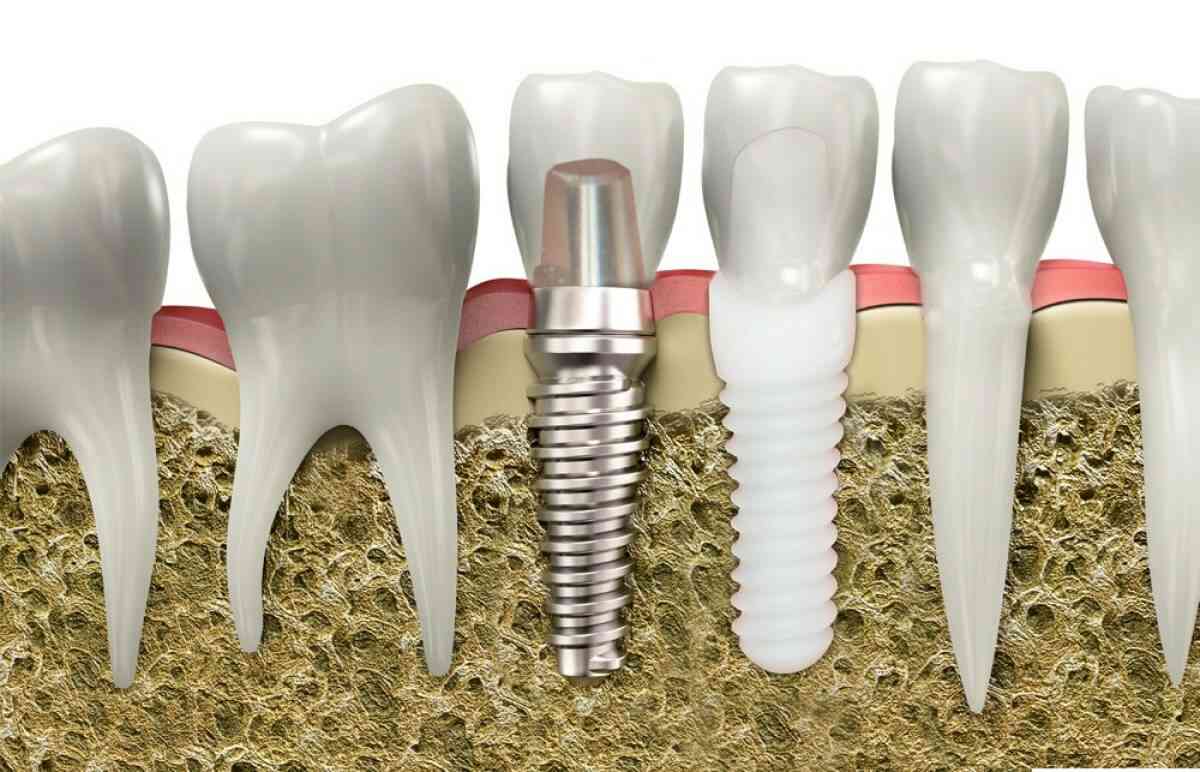Zirconia Vs. Titanium Implants: Which Are Better?
- - Category: Dental Care
- - 16 Jun, 2023
- - Views: 242
- Save

New materials, such as zirconia, which may merge well with the human jawbone, are shaping the future of dental implants.
New materials, such as zirconia, which may merge well with the human jawbone, are shaping the future of dental implants. But what are your choices if you require one right away?
Dental implants are made of zirconia or titanium. Titanium implants have long been used to replace lost teeth and have proven to be successful. Zirconia has also proven to be a generally durable option for long-term use while still looking quite close to natural teeth.
When deciding between zirconia or titanium implants, keep the following factors in mind: cost, strength, and durability over time, as well as risk level.
Zirconia implants are a newer alternative to titanium
Zirconia dental implants, which are constructed of a synthetic substance, are a newer option that is gaining popularity. Zirconia has been utilized in dentistry since the 1990s and is a wonderful option for persons who have metal allergies or who have difficulties with titanium. It can also be created in a variety of hues to complement your teeth, making it more cosmetically pleasing than traditional materials such as steel or gold. However, zirconia implants have not been utilized long enough to determine their long-term success.
What are the differences between zirconia and titanium implants?
Dental implants are a popular tooth replacement alternative. Since the 1960s, they have been utilized in dentistry. Titanium or zirconia can be used to make dental implants. Titanium implants are widely utilized since they have been tested for bodily compatibility, stability, and endurance for many years. They are made up of two parts:
- The implant body is placed in the jawbone (below the gum line) and fuses with the surrounding bone tissue (osseointegration).
- The abutment: this is the component that joins the implant body to the dental prosthesis (crowns, bridges, and dentures).
Zirconia implants are usually made of a single piece. This indicates that the implant body and abutment are linked. Compared to titanium implants, zirconia implants have not been utilized long enough to comprehend their long-term success.
Material of implants
Zirconia is an extremely hard ceramic. It's used in dentistry to make crowns, bridges, and dental implants. It is biocompatible, aesthetically pleasing, strong, and extremely expensive.
Titanium is a silver-colored metal that has been employed in the medical industry for decades, including hip and knee replacements and dental implants. Titanium is as strong as steel but 40% lighter. It is well-known for its biocompatibility, great strength, and corrosion resistance.
Biocompatibility and osseointegration
Zirconia and titanium dental implants are both biocompatible. They join the jawbone and serve the same purpose as the original tooth roots. This is known as osseointegration, and it involves the direct union of titanium and zirconia implants with living bone tissue. Depending on the bone density, this procedure can take 4-6 months to complete. Because zirconia implants are metal-free, they are appropriate for people who are allergic to metals. Zirconia is more pliable than titanium, meaning it may be easier to fit the abutment to the implant. Zirconia implants are also less expensive than titanium implants.
Strength of zirconia vs. titanium implants
In terms of strength, the fundamental difference between zirconia and titanium implants is that zirconia is not as strong as titanium. When compared to other metals, titanium offers superior mechanical qualities. Titanium is an excellent implant material since it is resistant to fracture under strong chewing stresses. Furthermore, zirconia implants are extremely robust and sturdy. Ceramics, on the other hand, are not as resistant to breaking as metals. As a result, they may fracture in areas with a high chewing load.
The aesthetic of zirconia vs. titanium implants
Titanium implants may develop a grey line under the gum if the patient has thin bone or thin gums, producing a cosmetic concern. The hue of zirconia implants closely resembles that of natural teeth. As a result, they are appropriate for areas with thin gums, weak bones, or probable gum recession, where the implant may shine through.
The placement
The implant body and the abutment (straight or angulated) are both made of titanium. As a result, they provide the dentist with more control over the placing process. Because of bone density and the best position of the dental implant, the dentist may need to place the implant body at a minor angle in some circumstances. They then utilize a straight or angulated abutment to create a more natural smile line and bite alignment.
Zirconia implant insertion is more difficult since the implant body and abutment are usually linked (one piece). Two-piece zirconia implants are now available. They have not, however, been widely tested. Titanium implants are preferable to zirconia implants for full-arch dental implants.
The durability of zirconia vs. titanium implants
For many years, titanium implants have been used. As a result, their stability and durability are well-established. Titanium implants have a 95% success rate over time. On average, they can endure 20 years. Zirconia implants have not been utilized long enough to determine their long-term success.


